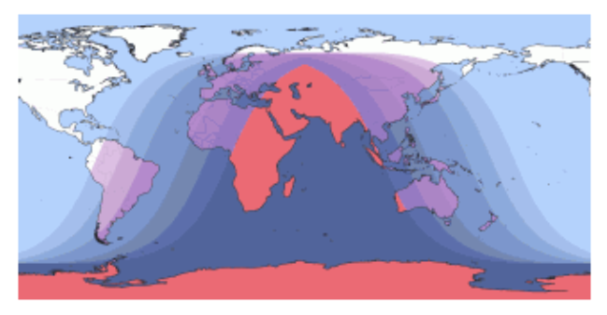


Indian Journal of Science and Technology
Year: 2021, Volume: 14, Issue: 3, Pages: 245-250
Original Article
Devendra Pareek1*, Pallavi Sengar1
1Department of Physics, Bhupal Nobles’ University, Udaipur, 313001, India. Tel.: 9413954886
*Corresponding Author
Tel: 9413954886
Email: [email protected]
Received Date:13 December 2020, Accepted Date:14 January 2021, Published Date:28 January 2021
The lunar eclipse at Udaipur (27◦ 43’ 12.00” N, 75◦ 28’ 48.01” E), India was experimentally observed on June16, 2011 using ground based NaI (Tl) Scintillation detector. We interpret such decrement of secondary gamma radiation flux (SGRF) on the basis of obstruction effect produced by Earth and Moon during lunar eclipse on radiation. Objective: To observe secondary gamma radiation flux during lunar eclipse day on comparison to pre and post eclipse days. Methods: For this experimental study we used ground based NaI (Tl) Scintillation detector. The data files were stored in computer for thirty minutes duration from 1.00 AM to 2.00 AM (Indian Time) on pre-eclipse normal days June 14 and 15, 2011 as well as on post eclipse normal day June 17 and also on eclipse day June 16, 2011. Finding: The analyzed data reveal significant decrement of secondary gamma radiation flux (SGRF) on lunar eclipse day about 6% on comparison to pre and post lunar eclipse days. Novelty: In this experimental study first time we reported about 6% decrement of secondary gamma radiation flux on lunar eclipse day on comparison to pre and post lunar eclipse days.
Keywords: Lunar eclipse; cosmic radiation; reflected solar radiation; secondary gamma radiation; obstruction effect by Earth and Moon
© 2021 Pareek & Sengar.This is an open access article distributed under the terms of the Creative Commons Attribution License, which permits unrestricted use, distribution, and reproduction in any medium, provided the original author and source are credited. Published By Indian Society for Education and Environment (iSee)
Subscribe now for latest articles and news.